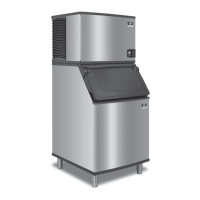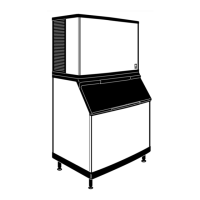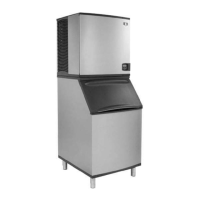164 Part Number 80-1505-3 6/11
Analyzing Freeze Cycle Suction Line
Temperature
Suction line temperature cannot diagnose an ice
machine. However, comparing this temperature during
the freeze cycle, along with using Manitowoc’s
Symptom #2 - Refrigeration System Operational
Analysis Table, can help diagnose an ice machine
malfunction.
The actual temperature of the suction line varies by
model, and will change throughout the freeze cycle.
This makes documenting the “normal” suction line
temperature difficult. The key to the diagnosis is
observing the compressor suction line temperature
during the last three minutes of the freeze cycle.
1. Use a quality temperature meter, capable of
taking temperature readings on curved copper
lines.
2. Attach the temperature meter thermocouple to the
copper suction line within 6” of the shut-off valves.
3. Monitor the suction line temperature during the
last three minutes of the freeze cycle and record
the low event.
4. Use this with other information gathered on the
Refrigeration Component Analysis Chart to
determine the ice machine malfunction.
5. Verify refrigerant amount is correct by weight
when recovering refrigerant and replacing a TXV.
Grossly overcharged QuietQube® ice machine in
ambient temperatures below 70°F will have a
suction line temperature below 10°F.
